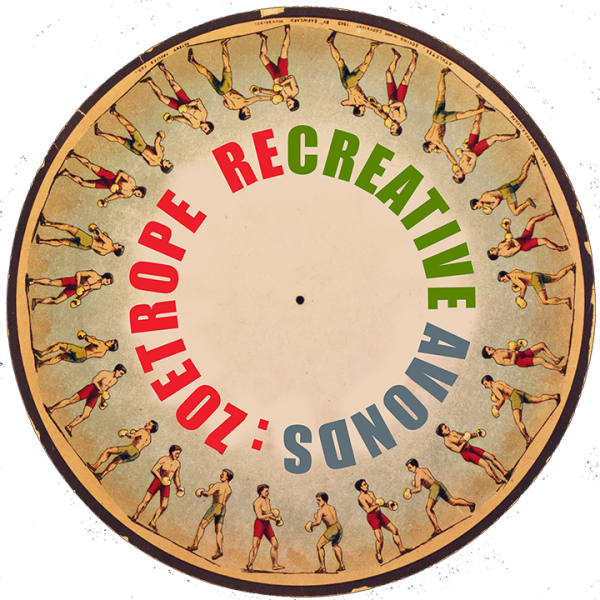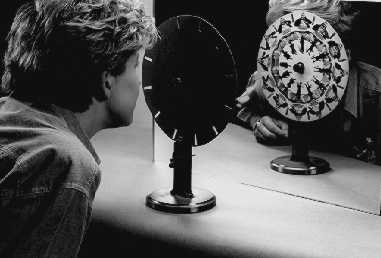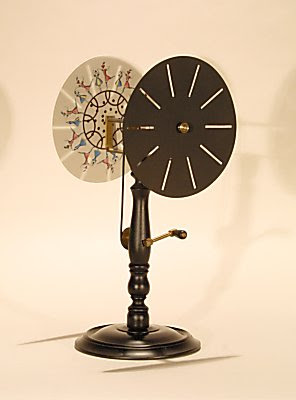Difference between revisions of "Animation: History, resources, and other good stuff"
| Line 6: | Line 6: | ||
==History== | ==History== | ||
| + | |||
| + | Animation - as we might understand it as a technical process of synthesising motion from a series of static images - precedes the invention of the cinematograph by several decades. It has its roots in the numerous game toys / devices, popular in the early 1800s which experimented with persistence of vision effect known as the Phi phenomenon. | ||
| + | |||
| + | ===Thaumatrope=== | ||
| + | |||
| + | The Thaumatrope accredited to three different people, Dr Fitton of London, Peter Roget and London physicist John Ayrton Paris. However it is known that Paris used his device to show the Phi phenomenon to the Royal College of Physicians in 1824. Its consisted of a disc with an image painted on each side. When the disc was spun by pulling on a twisted pair of strings, the images seemed to be combined - a bird on one side of the disc would appear in the empty cage on the other side. 'Trope' comes from the Greek word for 'things that turn'. 'Thauma' means wondrous, therefore a thaumatrope is a 'turning marvel' or 'wonder turner'. | ||
| + | |||
| + | [[File:Traumatrope.jpg| 500 px]] | ||
| + | <br> | ||
| + | <br> | ||
| + | LINKS - - - - - > | ||
| + | <br> | ||
| + | <br> | ||
| + | [https://vimeo.com/95039934 how it works] | ||
| + | |||
| + | [https://vimeo.com/16154042 A solar powered thaumatrope] | ||
| + | |||
| + | |||
| + | ===Phenakistiscope and Stroboscope=== | ||
| + | |||
| + | In 1832 Joseph Plateau (Ghent, Belgium) coined his invention - the Phenakistiscope (Greek for 'deceptive view'). That same year, professor Simon Ritter von Stampfer of the Polytechnical Institute (Vienna, Austria) called his invention the Stroboskop (stroboscope) ('apparition-box-viewer'). These devices were also known under other names such as: Fantascope, Phantamascope, Magic Disc or Kaleidorama. | ||
| + | |||
| + | The simplest phenakistiscope is a spinning disc mounted vertically on a handle. Arranged around the circumference of the disc is a series of equidistant radial slots (usually between 8 and 20), and on the face of the disc a series of pictures representing phases of movement of objects, people or animals. The user spins the disc and looks through the moving slots at the sequence reflected in a mirror, the rapid succession of pictures having the appearance of a moving image. The discs were sold in sets, and could be attached and removed from the handle by a simple fixture. | ||
| + | <br><br> | ||
| + | [[File:Phenakistiscopemirror.jpg | left]] | ||
| + | |||
| + | [[File:Phenac ackermann wood box.jpg | 250 px]] | ||
| + | <br> | ||
| + | A later version, which eliminated the need for a mirror, had two discs fixed at a distance on the same axis, one with slots and the other (changeable) with pictures. Some sets were designed as table models on wooden stands, with a handle to drive the discs by pulleys. | ||
| + | <br> | ||
| + | |||
| + | [[File:Phen3.jpg]] | ||
| + | <br> | ||
| + | ===Zoetrope=== | ||
| + | |||
| + | ===Praxinoscope=== | ||
| + | |||
| + | |||
==Technology== | ==Technology== | ||
| + | |||
==Recent projects== | ==Recent projects== | ||
Revision as of 00:39, 5 January 2015
Pre-cinematic animation devices
History
Animation - as we might understand it as a technical process of synthesising motion from a series of static images - precedes the invention of the cinematograph by several decades. It has its roots in the numerous game toys / devices, popular in the early 1800s which experimented with persistence of vision effect known as the Phi phenomenon.
Thaumatrope
The Thaumatrope accredited to three different people, Dr Fitton of London, Peter Roget and London physicist John Ayrton Paris. However it is known that Paris used his device to show the Phi phenomenon to the Royal College of Physicians in 1824. Its consisted of a disc with an image painted on each side. When the disc was spun by pulling on a twisted pair of strings, the images seemed to be combined - a bird on one side of the disc would appear in the empty cage on the other side. 'Trope' comes from the Greek word for 'things that turn'. 'Thauma' means wondrous, therefore a thaumatrope is a 'turning marvel' or 'wonder turner'.
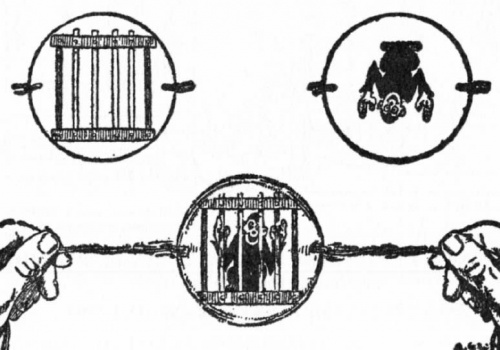
LINKS - - - - - >
how it works
Phenakistiscope and Stroboscope
In 1832 Joseph Plateau (Ghent, Belgium) coined his invention - the Phenakistiscope (Greek for 'deceptive view'). That same year, professor Simon Ritter von Stampfer of the Polytechnical Institute (Vienna, Austria) called his invention the Stroboskop (stroboscope) ('apparition-box-viewer'). These devices were also known under other names such as: Fantascope, Phantamascope, Magic Disc or Kaleidorama.
The simplest phenakistiscope is a spinning disc mounted vertically on a handle. Arranged around the circumference of the disc is a series of equidistant radial slots (usually between 8 and 20), and on the face of the disc a series of pictures representing phases of movement of objects, people or animals. The user spins the disc and looks through the moving slots at the sequence reflected in a mirror, the rapid succession of pictures having the appearance of a moving image. The discs were sold in sets, and could be attached and removed from the handle by a simple fixture.
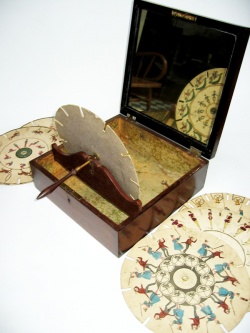
A later version, which eliminated the need for a mirror, had two discs fixed at a distance on the same axis, one with slots and the other (changeable) with pictures. Some sets were designed as table models on wooden stands, with a handle to drive the discs by pulleys.
Zoetrope
Praxinoscope
Technology
Recent projects
Potentially useful re-creative technology
Motors
Strobe Light
3d printing
lasercutting
Workshop documentation
...end
